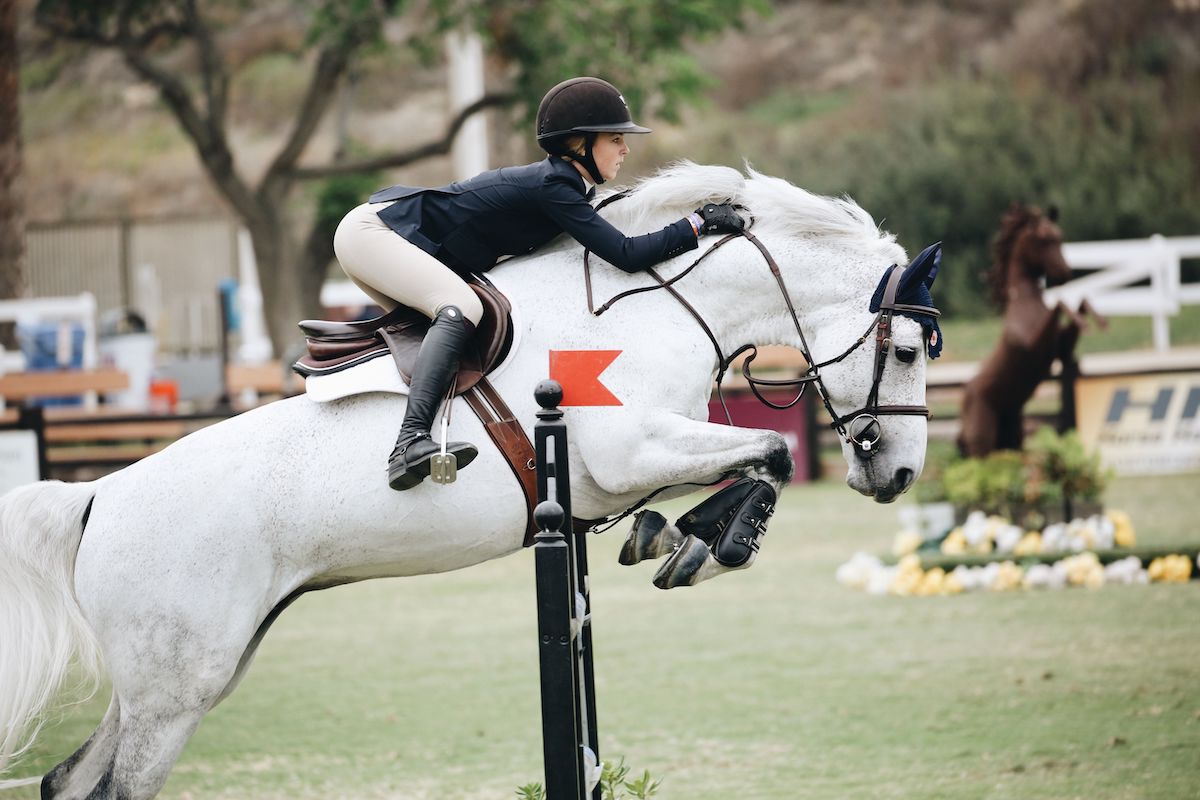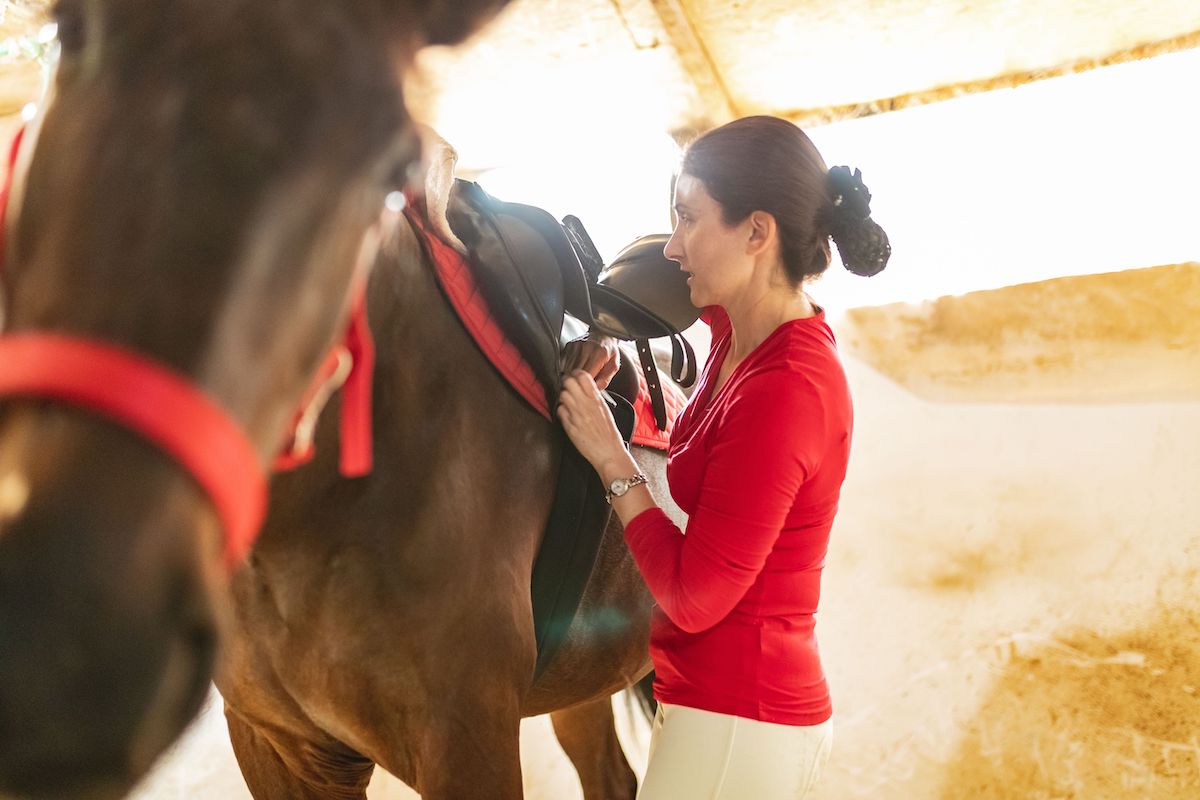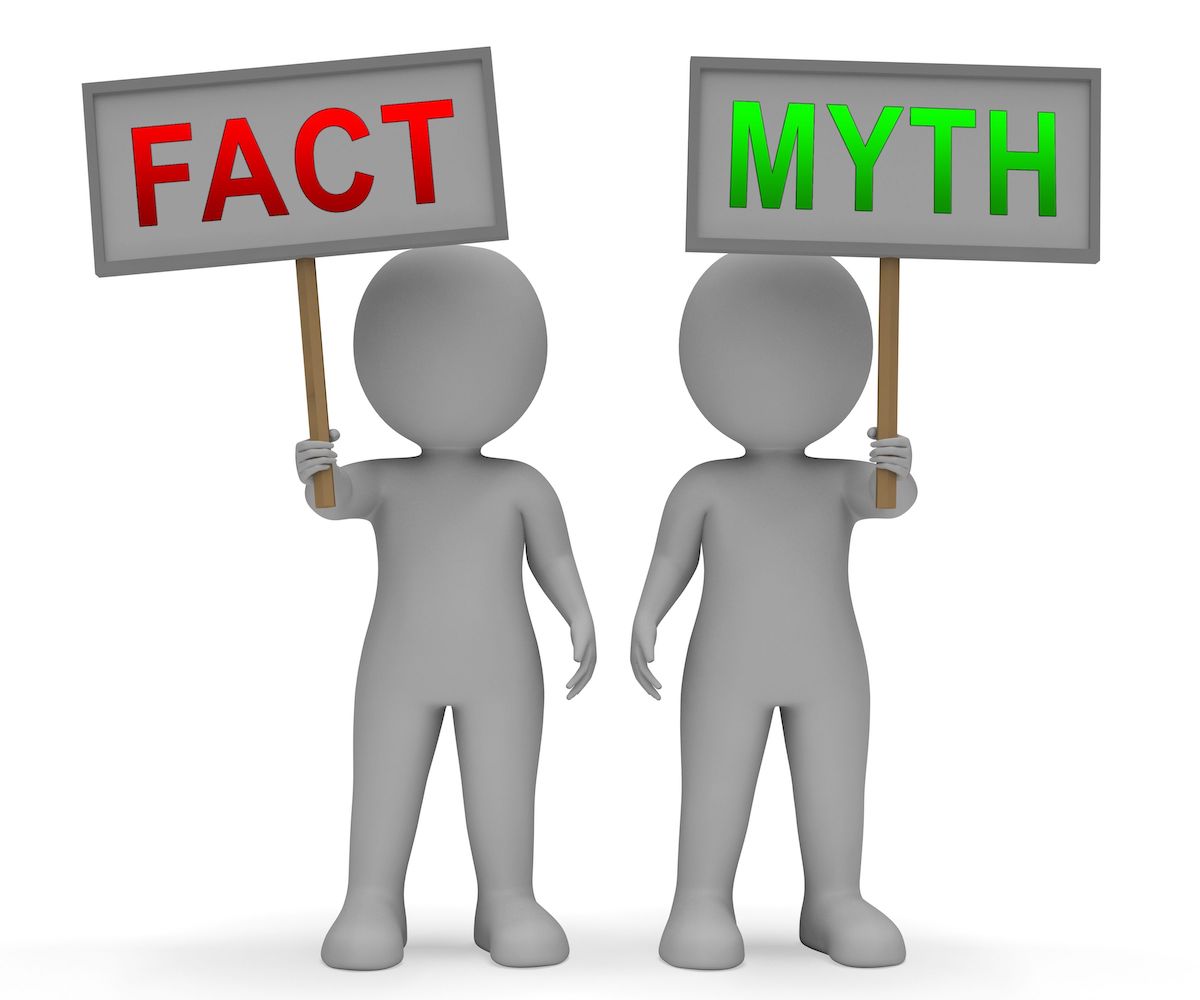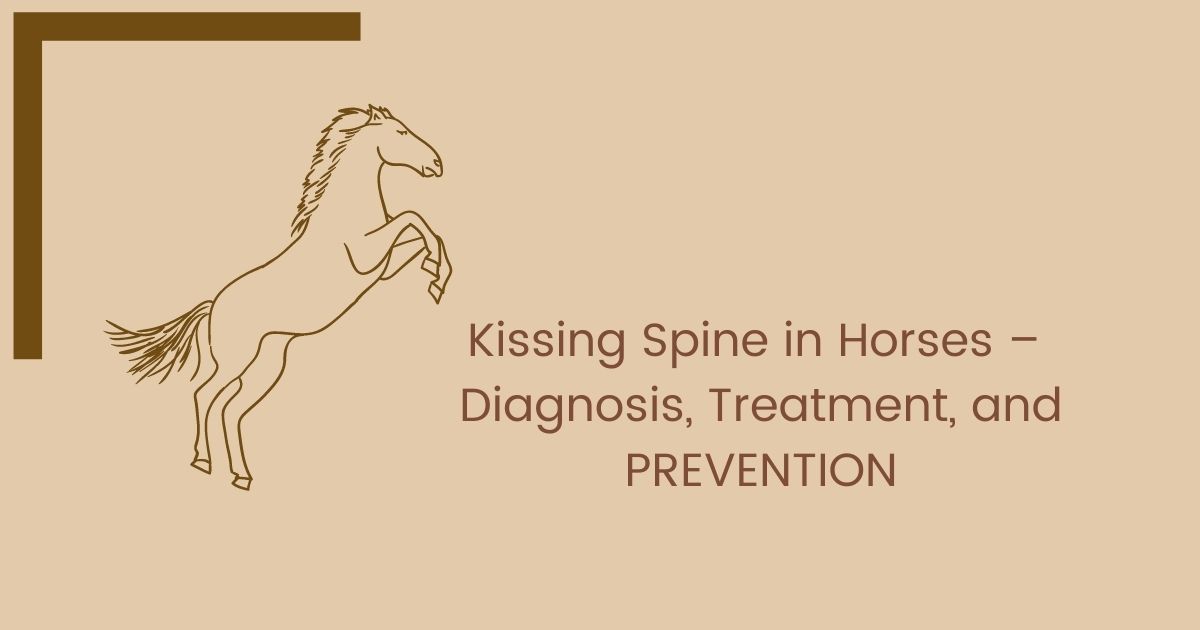What is Kissing Spine in Horses?
Kissing spine in horses is a condition in which two or more spinous processes are positioned in such a way that they end up touching or rubbing each other. The spinous process refers to the flanges of bone protruding from each vertebra in the spine.
In an average horse, the spinous processes are usually evenly spaced. This allows the horse to bend and lengthen its back with ease in a wide range of anatomic positions. Horses experiencing kissing spine might suffer back pain, arthritic changes, and bone cysts, among other challenges.
Keep reading this well-researched guide to get all the details you need to know about equine kissing spine. In the end, you will understand symptoms, causes, diagnosis, and treatment options for this condition.
You will also learn the outcomes of the condition and horse breeds susceptible to the condition.
Clinical Signs and Symptoms Associated With Kissing Spines
If your horse has mild kissing spines, it will not show any clinical signs. However, for those that do, the signs usually vary. Here are some of the signs to look out for:
- Unclear or clear lameness.
- General poor performance.
- Changes in behavior, for example, hypersensitivity to brushing, resistance, girthiness, rearing, head tossing, hollowing the back and resisting the bit. Other changes include having challenges with transitions, rushing or refusing fences, and cross-cantering.
- The horse’s back may also be painful to the touch.
Causes of Kissing Spines
According to experts, up to 30 percent of horses have a certain degree of kissing spines. They also claim that the condition can affect any horse breed that’s pursuing any discipline.
So, what causes equine kissing spine? Here are the most notable causes:
Long and Sway Back
Experts argue that having a long back predisposes the horse to kissing spine. This is particularly true if the horse also has a swayback. Additionally, the experts claim that such horses start experiencing challenges when they begin to lose core strength and muscling.
Consequently, the horse ends up with an inverted back bringing the dorsal spinous processes closer together.
Disciplines That Involve Inversion of the Horse’s Topline
Studies have also revealed that horses that take part in any discipline that requires them to invert their topline during athletic activities have a greater risk of showing the signs of the condition.
Examples include jumpers who invert their backs when landing and barrel racers who have to invert their backs as they round a sharp corner.
Unsuitable Riding Conditions
Unsuitable riding conditions also predispose the horses to this disorder. Some unsuitable conditions to avoid are:
- A heavy rider when compared to that size of the horse.
- A poorly fitted saddle.
- A rider that bounces around.
The things mentioned here can aggravate the kissing spine symptoms.

Asking Too Much of Your Horse
Experts also warn that you shouldn’t ask too much of your horse. For instance, they claim that asking too much collection or engagement when the horse is not ready physically can enhance the pain.
As a result, experts advise that you ensure your charger is ready before asking for a higher level of engagement.
How is Kissing Spine in Horses Diagnosed?
How will you know that your horse has kissing spine? Well, if you are a first-timer, you must seek the help of a veterinarian whenever you see any of the symptoms mentioned here above.
Nevertheless, here is the general process of diagnosing kissing spine in horses:
- Start by examining the horse’s conformation and muscling of the topline.
- Next, perform a complete lameness assessment to rule out lameness. Watch the horse as it moves in a straight line while jogging and sprinting on a circle. This step also involves stroking the legs, back, and neck.
- For many horses, there will be specific behavior exhibited only when under saddle. In this regard, perform an under-saddle exam. At times it might be challenging to recreate the behavior during diagnosis. In such a case, the owner can share videos of the horse exhibiting the symptoms.
- Once you ascertain the problem is limited to the horse’s back, the expert will perform an x-ray. The vet usually performs what is referred to as lateral spinal radiographs. These are x-rays taken from the side to show the distance between the spinous processes.
Once the vet examines the results of the x-ray, they will advise you on the next course of action.
Kissing Spine Surgery and Other Treatment Options
You can use various treatments on horses with kissing spines. However, regardless of the kissing spine treatment procedure being applied, the horse must be comfortable during the entire process. The veterinarian achieves this by reducing pain.
Additionally, you can make the horse comfortable through muscle relaxation and physical exercises that stretch and strengthen abdominal and back muscles. The exercises also stabilize the horse’s posture and enhance its mobility.
You can also put the horse through medical treatments such as shock wave therapy of the affected vertebrae and adjoining muscles. Other medical treatments to consider are injecting anti-inflammatories in the affected regions, also known as mesotherapy. There is also the use of corticosteroid injections in the spaces between the vertebrae.
Physical therapy is also a viable treatment option. It includes daily exercises that encourage the equine to move in a comfortable frame freely. Then, once the horse is willing to stretch, you can progress to cavaletti and poles.
Use a Pessoa Lunging System to persuade the horse to engage its core muscles. Experts also recommend exercising on an aqua treadmill. Moreover, you should perform a saddle fit and make the necessary adjustments to get rid of pressure points on the back. You can also apply chiropractic and acupuncture therapies and therapeutic ultrasound.
Suppose it is a severe case; surgical treatment might be recommended. One approach of the kissing spine surgery is to remove around three inches of the bone atop each of the dorsal spinous processes(osteoplasty).
This surgical procedure is highly invasive and involves long recovery times.
On the other hand, the veterinary physician might use an endoscopy to take out selected dorsal spinal processes and rejoin the ligaments between the processes.
The other surgical option would be to perform an Interspinous Ligament Desmotomy (ISLD). The process involves cutting the interspinous ligament(s) to alleviate tension on the ligament. However, although surgical procedures yield positive results, they can also destabilize the back and cause lameness in the future.
Is Kissing Spine Preventable?
Even though experts claim that the cause of kissing spines is unknown, it is believed to be related to development and conformation. Nevertheless, there are specific measures you can take to reduce the chances of your horse suffering the disorder. They include:
- If you have a horse with a long back, ensure it performs stretching and strengthening exercises.
- Ensure that the rider’s weight is proportional to the horse size.
- You should fit the horse saddle appropriately.
- The riders should also ensure they don’t bounce around when riding the horse.
- Horse owners and riders should avoid asking too much of their chargers before they are physically ready. Instead, only engage the horse in what it is strong enough to do.

Kissing Spine in Performance Horses
Suppose your horse has kissing spine; you need not worry. However, it can be a contributing factor to causing horse back pains. Data from veterinarians show that performance horses are the most commonly diagnosed cases.
Other studies also show that kissing spines in performance horses are mainly acquired. They as usually a result of several factors, including those mentioned here above. Another factor that causes the disorder in performance horses is improper training.
A poorly trained charger might carry itself with its head high, back hollow without engaging its core muscles. This running posture is a contributor to the kissing spine disorder.
Alternate Causes of Backpain in Equines
Not all back pain in horses is caused by kissing spine. It is common for ridden horses to have pain or stiffness on their backs. There are other causes of back pain in horses, including:
- A poorly fitting saddle can cause back pain. This happens when it moves backward or forward, pinching or creating pressure points on the horse’s back. Moreover, if the saddle slides to one side, the weight will not be evenly distributed on the back muscles.
- A heavy rider who does not have a proper balance or cannot ride the horse correctly might also cause the ridden horse back discomfort.
- Lameness and pain in other parts of the horse’s body can cause back pain too. So if you notice tension on the horse’s back, it is likely to be caused by discomfort somewhere else in the body.
Susceptible Horse Breeds and Types
While studies suggest that kissing spine is an acquired disorder rather than a genetic disorder, certain horse breeds are more predisposed to kissing spines. For instance, experts looking into the skeletons of long-extinct horses have found proof of kissing spines in these horses.
Common Myths on Kissing Spines Debunked

With many people sharing different notions about kissing spine, separating the facts from the fallacy might be challenging. Below are the common myths on kissing spine:
Myth: If your horse has back pain or misbehaves under the saddle, he has kissing spine.
Truth: Several conditions can cause non-specific lousy behavior. Moreover, many other factors can cause back pain.
Myth: You can effortlessly tell when kissing spines are causing your horse’s discomfort on a radiograph.
Truth: Studies have confirmed it takes more than a radiograph to determine whether kissing spine is causing your horse’s problems. While identifying kissing spines on a radiograph is straightforward, accurately determining that they are the cause of your horse’s problems could be more challenging.
Myth: You should never buy a horse with kissing spines revealed on radiographs as it will never be a performer.
Truth: Studies have revealed that horses with a radiographic diagnosis of kissing spine can have a very successful career. There is no proof that the radiographic appearance of kissing spines could predispose asymptomatic horses to disease in the future.
Outcomes and Aftermath of Kissing Spines in Horses
Having kissing spines does not mean the end of the road for your horse. Studies have shown that the majority of affected horses that show clinical symptoms usually return to work after medical or surgical treatment and physical therapy.
For sustained results, there is a need for an all-around approach that requires patience and commitment. The prognosis, according to experts, is that horses five years or younger exhibit poor recovery.
Additionally, the prognosis is poor if more vertebrae were involved in the kissing spine surgery or kissing spines were secondary to other spinal issues.
